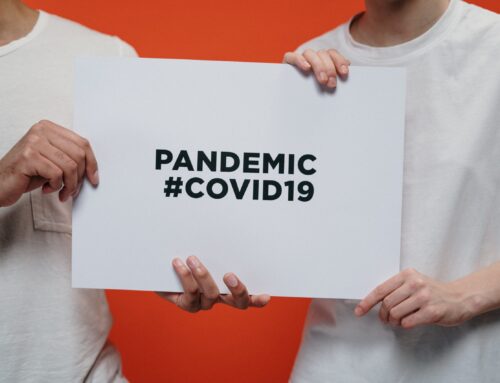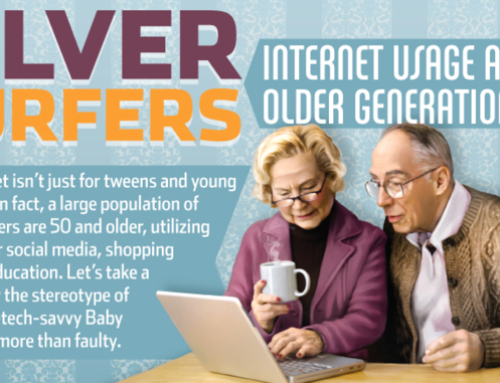A lot has been going on in the world of SEO lately. Blog networks are getting deindexed for selling links*. Sites using those links are losing rankings. Google is sending letters to seemingly random users, stating that their backlinks look unnatural. (Even sites with less than ten links have received this letter.) And all of this is creating a serious atmosphere of fear, uncertainty and doubt.
I’ve got my own opinions about all this, which I’m happy to share one on one, but I’m not quite brave enough to announce to the world. So instead of my usual take on things, I thought I’d share a couple of my favorite blurbs from some articles I’ve read recently.
From Patience is a Virtue, by Aaron Wall

- Google first sends a warning for traffic going up, and the SEO tells the client that this is because they did such a great job with SEO.
- Then Google sends a warning for traffic dropping & the client worries that something is wrong.
- The net impact on actual traffic or conversions could be a zero, but the warnings amplify the perception of changes.
From The Changing Tide of Link Building, by Tim Grice
I know I rant about this a lot and published a post at the beginning of the year discussing the diminishing value of anchor text, however I’m not going to apologize because over the past month I have seen more devaluing of anchor text than I have seen in the last 8 years.
I’m not just talking about filters being applied; I’m talking about whole sets of SERPs being shuffled around because the market leaders went too hard at it with anchor text.
You need to move your focus away from targeting keywords, and instead target pages. Assess each of your target pages and try to understand the type of anchor text you need to rank in the long term and not just for a short term boost.
You have to incorporate brand, you must have tons of variation, exact match? In my opinion, it should make up no more than 15 – 20% of your back link text, if that. So do a quick check in OSE or Majestic, get a breakdown of anchor text on your target pages, and come up with a strategy that is going to put you in line with the above.
Link Penalties
My post in March addressed the recent issues with link networks, namely those paid services that allow you to spin and post content all over the web. However, just to recap:
– They are all being deindexed
– Any keywords supported by links from these networks are losing rankings
I have yet to see a blanket penalty handed out for using these networks and receiving the webmaster tools message, however keywords that rely on these links are being hit, and hit hard.
![]() You guys know I’m a “big picture” kinda guy right? So let me share this with you. A friend of mine recently pointed out to me that he noticed a certain big brand ranking very well for a lot of keywords. Thinking it might be the next JC Penney’s, he checked out their anchor text. What he found was that nearly every one of their links used their Business Name/Brand (not the actual keywords they were ranking for as he expected) as the anchor text. Could it be that Google is simply favoring sites with more branded anchor text and filtering sites with heavily optimized anchor text? That would fit with a recent warning that Google was working on an “over optimization” penalty.
You guys know I’m a “big picture” kinda guy right? So let me share this with you. A friend of mine recently pointed out to me that he noticed a certain big brand ranking very well for a lot of keywords. Thinking it might be the next JC Penney’s, he checked out their anchor text. What he found was that nearly every one of their links used their Business Name/Brand (not the actual keywords they were ranking for as he expected) as the anchor text. Could it be that Google is simply favoring sites with more branded anchor text and filtering sites with heavily optimized anchor text? That would fit with a recent warning that Google was working on an “over optimization” penalty.
Could the new SEO be as simple as: Branded anchor text + fresh relevant content = rankings?
* The blog network that I referred to being deindexed was BuildMyRank. They allowed businesses to post really poor (often spun) content on their network of mostly unrelated blogs using whatever anchor text they chose. Yes, it was a paid network, but there are a few things even more wrong with this kind of link strategy.
1) unrelated content
2) spun or poor quality content
3) often over-optimized anchor text by the end user
These aren’t even best practices for building natural links.
My advice – grow your backlinks slowly. If your anchor text is over optimized, acquire more branded links. And as always, continue to add fresh, quality content to your site. (He said, clearly trivializing the complex strategies of Search Engine Optimization.) 🙂
Thanks for reading.
David McBee



I would never rely on one of the article building companies for all my seo juice and I think that’s why a lot of people are losing in the SERPs .link diversity is key 🙂 thanks Dave